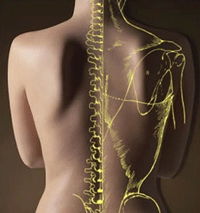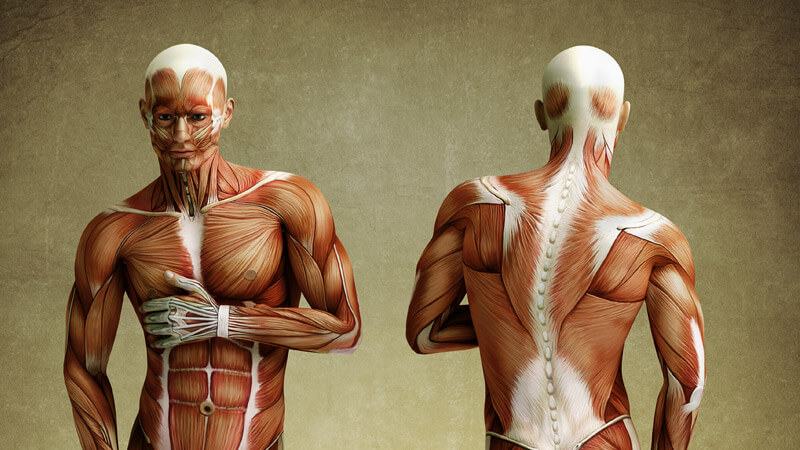Nutritional Therapy
 Many people today feel overwhelmed by the great amount of new and sometimes confusing or contradictory information available on diet and nutrition. At the Functional Medicine Center in Flower Mound, TX, we will thoroughly evaluate your nutritional state through laboratory testing and recommend a diet and supplement therapy based on your individual needs. We use the most up to date scientific information and traditional, time-tested principles.
Many people today feel overwhelmed by the great amount of new and sometimes confusing or contradictory information available on diet and nutrition. At the Functional Medicine Center in Flower Mound, TX, we will thoroughly evaluate your nutritional state through laboratory testing and recommend a diet and supplement therapy based on your individual needs. We use the most up to date scientific information and traditional, time-tested principles.
Dr. Ozzie discusses the importance of nutrition.
Chiropractic
Chiropractic care envelops a drug-free, hands-on approach to health care that includes patient examination, diagnosis and treatment. Chiropractic focuses on disorders of the musculoskeletal system and the nervous system, and their effects on general health. Chiropractic care is used most often to treat neuromusculoskeletal complaints, including but not limited to back pain, neck pain, pain in the joints of the arms or legs, and headaches.
With broad diagnostic skills Chiropractors are trained to recommend therapeutic and rehabilitative exercises, as well as to provide nutritional, dietary and lifestyle counseling.
The most common therapeutic chiropractic procedure is known as “spinal manipulation,” also called chiropractic adjustment. Manipulation restores joint mobility by manually applying a controlled force into joints that have become hypomobile – or restricted in their movement – as a result of a tissue injury. Tissue injury can be caused by a single traumatic event, such as improper lifting of a heavy object, or through repetitive stresses, such as sitting in an awkward position with poor spinal posture for an extended period of time. In either case, injured tissues undergo physical and chemical changes that can cause inflammation, pain, and diminished function for the sufferer. Manipulation, or adjustment of the affected joint and tissues, restores mobility, thereby alleviating pain and muscle tightness, and allowing tissues to heal.

Chiropractic adjustments affect nerves, which control the function of virtually every system in the body, including the organs. As a result, adjustments can also be extremely effective for a wide variety of other health problems including asthma, digestive problems, fatigue, infections, arthritis, hormone imbalances, and many more.
Below are the general phases of chiropractic care:
Phase 1: Relief Care
If you are in pain when you come into our office, the first objective is to help you feel better. Depending on the severity of your problem, it is typical to need care 2-3 times per week for 4 to 12 weeks.
Phase 2: Corrective/Restorative Care
During the corrective care phase, muscles and other tissues are allowed to heal more completely, thereby helping prevent injury. It is typical to need care 4 to 8 times per month for 6 to 24 months, depending on your overall health and the severity of your problem.
Phase 3: Wellness Care
Once your body has fully healed, it is important to come in for periodic adjustments to avoid problems in the future. Usually, this only requires a quick visit to the chiropractor 1 to 4 times per month, based on your lifestyle and goals.
Dr. Ozzie discusses the importance of getting chiropractic adjustments.
Applied Kinesiology (AK)
Applied kinesiology (AK) is a diagnostic method that uses muscle testing to evaluate the functioning of the body’s systems. A simple example of how applied kinesiology works is if you have a kidney infection or stone, the low back muscle (trunk extensors) will become very spastic. When this occurs the hip flexors (psoas muscle) will be weakened by a process called reciprocal inhibition. The psoas muscle is related to kidney function, therefore a weak psoas could be related to a kidney deficiency. Applied kinesiology can also be used to determine whether specific foods and other substances may be contributing to health problems.
Autonomic Response Testing
When a substance is placed over an area of the body which contains this identical substance, a stress signal is elicited which makes a strong (facilitated) muscle become weak (inhibited). Today functional MRI or fMRI technology is being developed that uses the same resonance phenomenon to accomplish the same objective.


